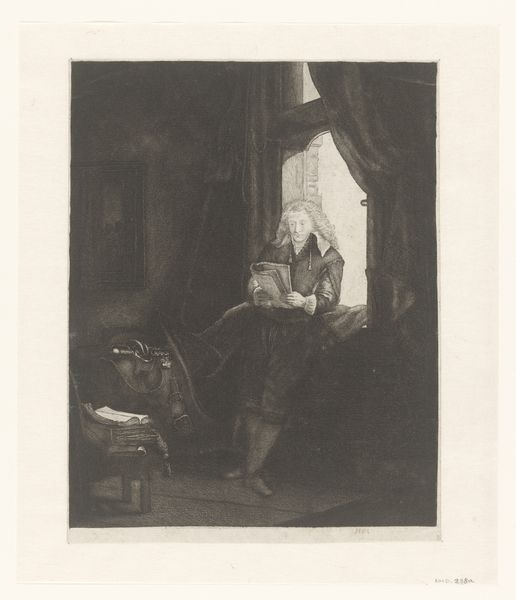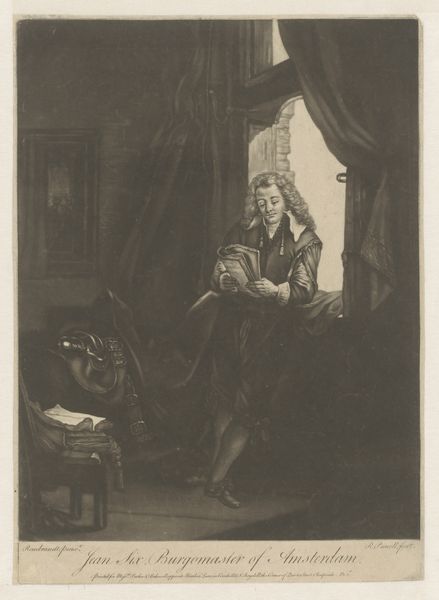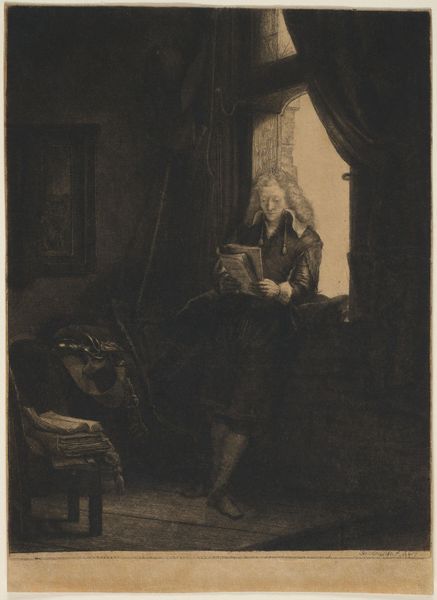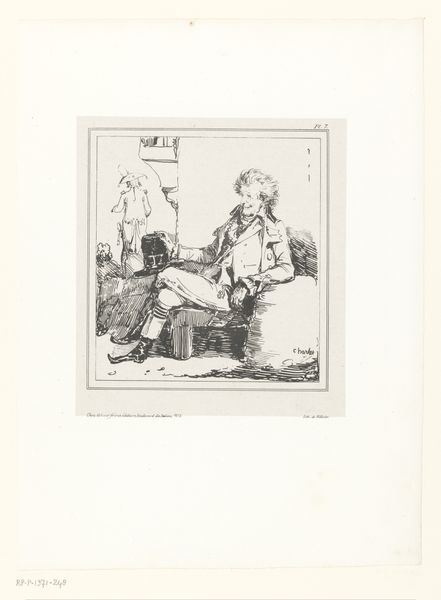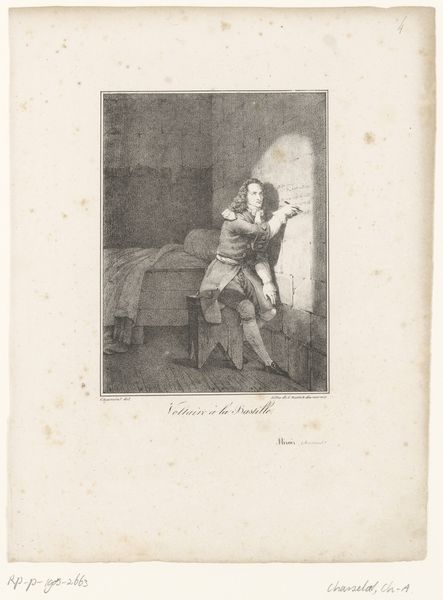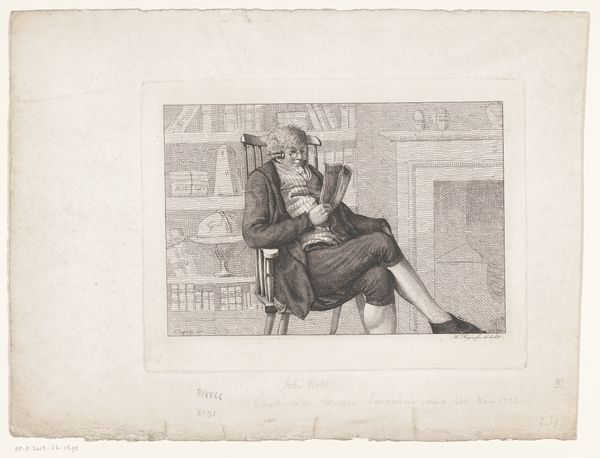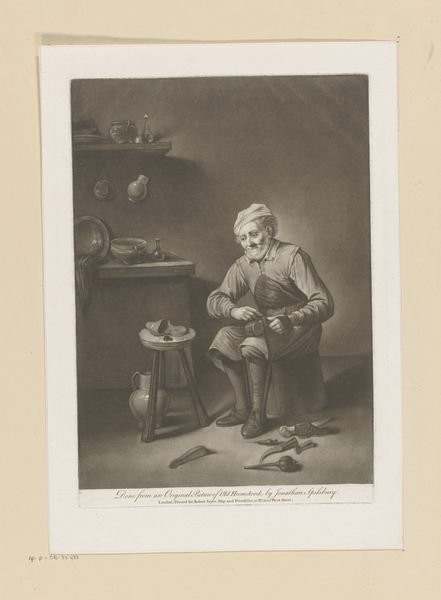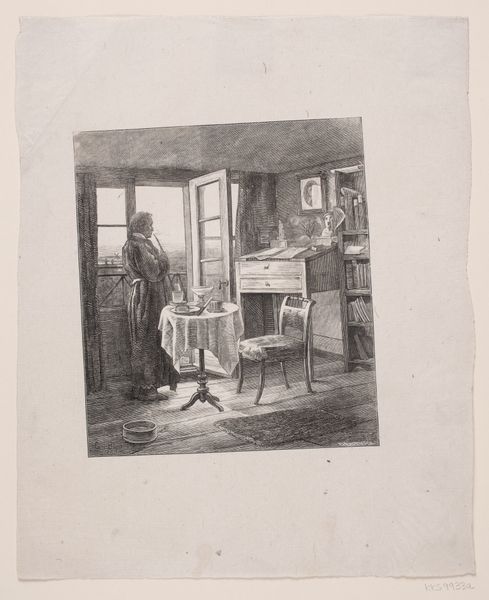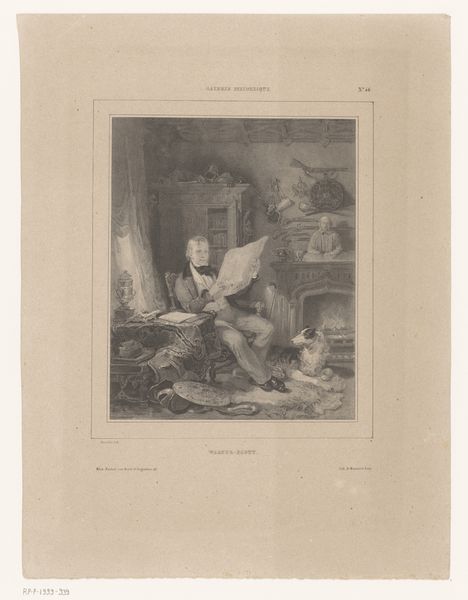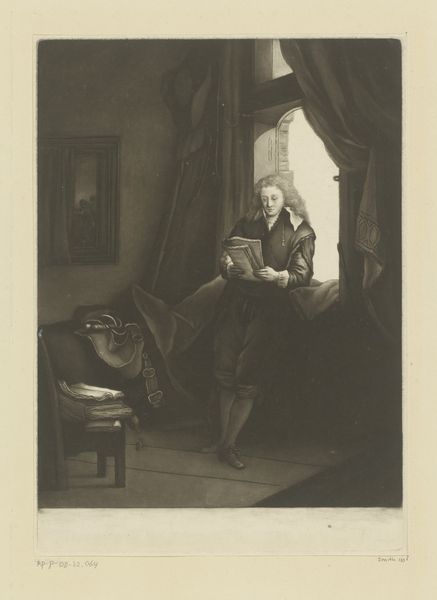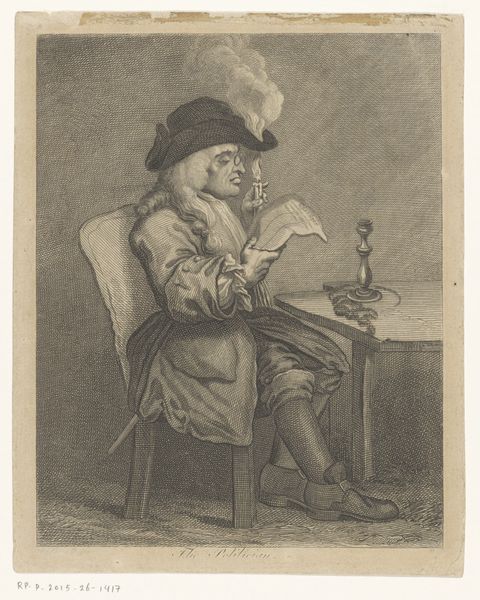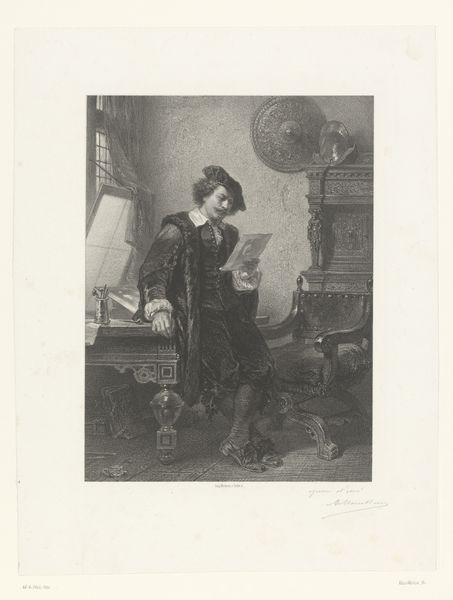
print, engraving
#
portrait
#
baroque
# print
#
england
#
genre-painting
#
engraving
Dimensions: 9 5/16 x 7 in. (23.65 x 17.78 cm) (image, sheet)11 15/16 x 9 1/4 in. (30.32 x 23.5 cm) (mount)
Copyright: Public Domain
Curator: This print from around the 18th century, currently residing at the Minneapolis Institute of Art, depicts Capt. William Baillie. It’s executed using engraving. Editor: My first impression is that this has such a sombre, almost melancholic mood. The way the figure is positioned near the window, the slightly muted greyscale... it speaks of introspection. Curator: The darkness definitely speaks to that melancholy. Notice how the trappings of his rank—the armor, sword, and helmet in the background—are cast into shadow, while his attention is drawn to papers in his hand, which could symbolize contemplation over action. What emotional continuity resonates for you with these visual symbols? Editor: Right, the dark shadows seem intentional, a compositional tool to draw the eye toward his face and hands—the points of illumination. Beyond that, look at the lines and cross-hatching: they create tonal variations that provide an almost tactile experience, enhancing the three-dimensionality. Curator: And there's such history embedded within the symbols – the window, historically used as a threshold between inner thought and outer action, further compounds the ambiguity of whether he will stay in contemplation, or leave ready to strike. Editor: That very window frame acts as, essentially, a picture frame within a picture frame—reinforcing a focus on that pensive figure, whose garb still clearly communicates something grand and refined despite being presented at this solemn, quiet moment. Curator: Baroque art, particularly in England, has this habit of presenting human drama with an air of refinement. Think of the Shakespearean stage! Is he perhaps pondering military action, or private matter? Editor: This play of shadow and light reminds us of the drama found in life, both personal and historical—a constant duality expressed using the medium of ink. It highlights a profound artistic capacity within simple, accessible materials. Curator: Reflecting on this, the portrait pulls together England’s martial and artistic traditions of that era. A reminder of the psychological burdens carried by individuals, regardless of rank. Editor: Ultimately, what strikes me is the way its formal qualities—the balance of light and dark, line and form—contribute so strongly to its meaning. The visual language employed conveys so much unspoken depth.
Comments
No comments
Be the first to comment and join the conversation on the ultimate creative platform.
